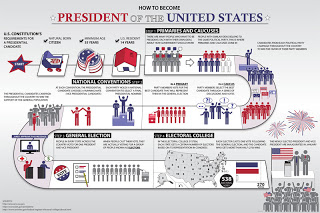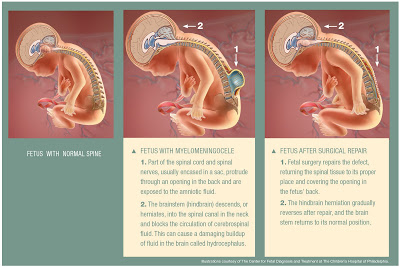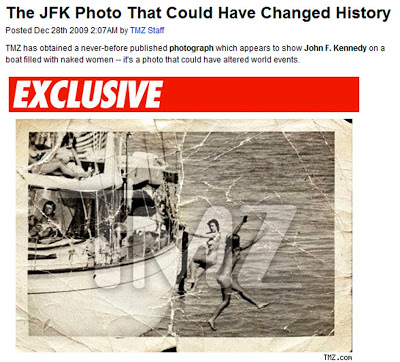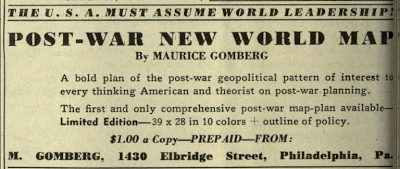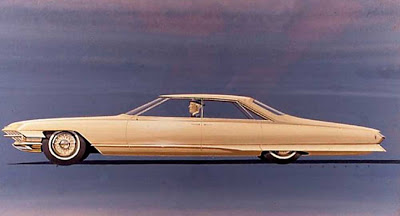La tienda online de National Energy Foundation.
Libros, póster, multimedia.
Lema: Think! Energy
DATA: Entrevista a Ben Welsh, The Data Desk
Entrevista realizada por Juantxo Cruz en enero de 2015 a Ben Welsh, periodista de datos y database producer en LA Times.
Ben Welsh y ‘The Data Desk’ de Los Ángeles Times
THE DATA DESK
¿Qué es el Data Desk de Los Ángeles Times?
Ben: Yo trabajo en LA Times en California en un equipo denominado ‘The Data Desk’.
‘The Data Desk’ comenzó más como una idea que cómo una organización estructurada, se trata de un lugar común para trabajar con datos y se extiende entre varios departamentos de Los Ángeles Times, con gente que trabaja en el sitio web, gente que trabaja en el periodismo de investigación, gente que trabaja en el departamento de gráficos.
Entonces, es como una zona de conexión entre los periodistas, un punto de encuentro. ¿Cómo se organiza este flujo de conexiones?
Ben: Para mí lo importante es la capacidad de crear relaciones entre los grupos que componen la organización, personas que están interesadas en utilizar los datos para encontrar y contar historias que nos serían posibles de otra manera. Después vienen los ajustes de organización para ver quién va a hacer qué y o quién va a escribir la historia. Lo importante es la idea de utilizar los datos para hacer que las historias aparezcan y encontrar las personas en la organización que estén de acuerdo con ello.
HERRAMIENTAS DE LOS PERIODISTAS
¿Cuáles son las principales herramientas que utilizáis en ‘The Data Desk’?
Ben: En nuestro equipo tenemos desarrolladores web, que trabajan todo el día con editores de texto y entornos de código abierto para construir sitios web, hasta personas que son más analistas y reporteros de investigación que utilizan Microsoft Excel y otros programas que hacen estos objetivos más sencillos sin necesidad de programar. Así es que es muy variado, dependiendo de la persona y en lo que esté trabajando tú puedes utilizar cualquier herramienta.
Y tú, ¿cuál es la herramienta que dominas mejor?
Ben: Personalmente, yo prefiero el código abierto por la calidad es muy alta, el coste es muy bajo, un coste cero, y me permite conseguir todo lo que quiero sin coste alguno.
(Ver aquí algunas de sus aplicaciones)
EL EQUIPO DE DATOS
¿Cuántas personas participan en el equipo? ¿Son todos periodistas?
Ben: Somos alrededor de 500 personas especializadas en diversas tareas y en trabajando con datos. Sí, somos periodistas. Escribimos historias además de código y trabajamos con los reporteros para darle forma a las historias y contarlas.
PROGRAMACIÓN Y PERIODISMO
Tus aplicaciones muestran una complejidad técnológica importante. ¿Has estudiado ingeniería o alguna rama tecnológica especializada?
Ben: No tengo una educación formal en computación, mucha gente sabe programar, pero yo empecé a interesarme por los ordenadores en la escuela secundaria cuando era joven.
Nunca fue un objetivo para mi ser programador, pero estaba interesado en programación como usuario y entonces cuando empecé a trabajar como un periodista tradicional enseguida vi las posibilidades que tenía para encontrar historias con unos conocimientos mínimos de programación.
¿Cuáles eran tus conocimientos de programación cuando empezaste en el mundo del periodismo de datos en 2007?
Ben: Estudié en la Universidad de Misuri en EEUU. Allí había un grupo especial, llamado NICAR – ‘National Institute por Computer Assisted Reporting’-. No era un grado o un programa educativo. Es un grupo profesional dentro de la Universidad que realiza sesiones de entrenamiento con los periodistas para aprender programación. Ahí trabajé como estudiante graduado para ayudar a la organización. Tenía el tiempo, la gente y la ayuda para ser convertirme en un programador profesional.
BASES DE DATOS Y PERIODISMO
Afirmas que, trabajando con bases de datos, si haces las cosas bien, no se puede mentir. ¿Cuáles son los errores más comunes trabajando o entrevistando las bases de datos?
Ben: No entender cómo fue organizada o cómo fue creada la base de datos y cuáles son sus puntos débiles. Todos los procesos de creación de bases de datos tienen problemas, fallos, agujeros, puntos que hay que revisar, que pueden hacer que el análisis sea equivocado. Si la base de datos tiene duplicados y no tienes cuidado con esto, si los datos son alterados y no te das cuenta, si la persona que la creó falló en la forma de almacenar los datos y no te das cuenta o haces una mala interpretación.
¿Y en cuanto a la estadística?
Ben: Tu operación matemática puede ser perfecta cuando se hace la suma, pero tu interpretación, en la declaración que puedas hacer, quizás sea equivocada, excesiva o malinterpretada.
También son importantes las fuentes…
Ben: Tienes que conocer tus datos, cómo se consiguieron, cuáles fueron las observaciones antes de hacer una afirmación.
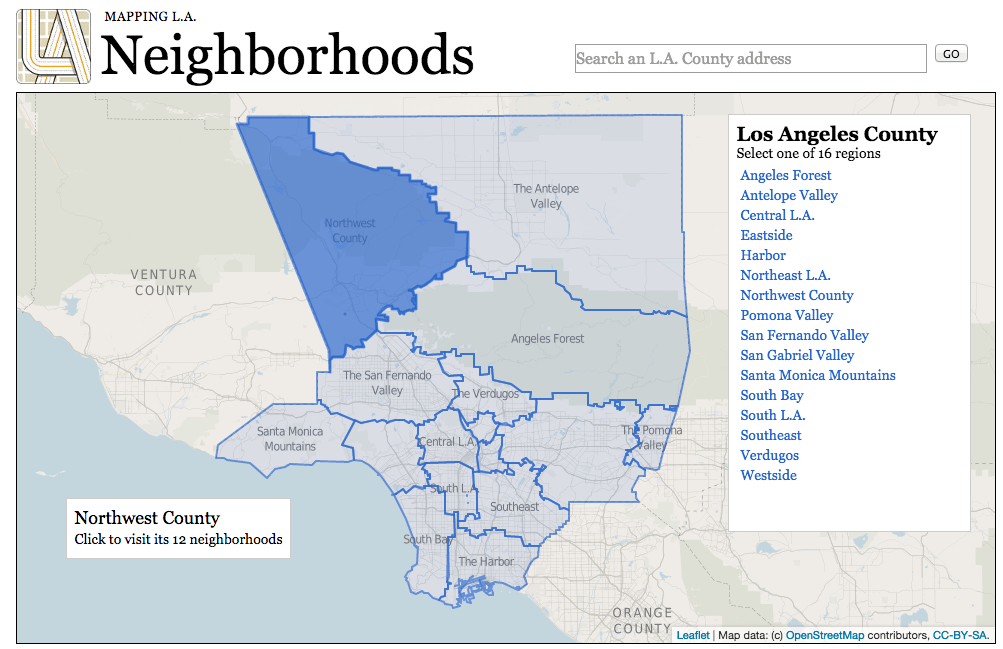
PYTHON Y ROBOTS COMPUTACIONALES
Estáis programando robots con el lenguaje Python para construir bases de datos y encontrar historias. Cuéntanos más sobre esto.
Ben: Un ejemplo puede ser los arrestos realizados de la Policía de Los Ángeles. Todos los días por la mañana la policía envía un correo electrónico con la lista de las personas que han detenido el día anterior. Tenemos una secuencia de comandos, un robot si lo quieres llamar así, en realidad es un programa escrito con Python y, que para ser honesto, es muy modesto, que descarga el fichero y lo incorpora a la base de datos para hacerlo accesible a los reporteros y utilizarlo en búsquedas e investigaciones.
También pregunta automáticamente a los datos sobre una serie de cuestiones, como por ejemplo una serie de profesiones, como políticos o productores de cine. Si han sido arrestados, el programa manda un correo con un aviso a todo el mundo. Si el arresto ha sido consecuencia de un asesinato o se trata de un acontecimiento grave, estos sucesos tienen una señal especial en el programa para avisarnos.
¿Son como máquinas que hacen el trabajo sucio…?
Ben: Lo que realmente estás haciendo cuando escribes este tipo de código, la secuencia de comandos, lo que buscas son las preguntas que los periodistas harían siempre a esta base de datos.
Ben Welsh estuvo en Madrid el pasado mes de diciembre asesorando el II Taller de Periodismo de Datos organizado por Mar Cabra y Adolfo Antón Bravo, del grupo de periodismo de datos de MediaLab Prado, un centro cultural dependiente del Área de Las Artes, Deportes y Turismo del Ayuntamiento de Madrid.
MOOCs
Gran gráfico de The Chronicle of Higher Education.
Análisis de los principales actores en la educación online.
Washington DC.
EEUU.
28 imágenes de las elecciones EEUU

1. El camino hacia La Casa Blanca. Cuéntamelo otra vez Sam.
5. La familia y algunos más.

7. Rommey de peque.

8. Obama de peque.
Libro: Barack Obama, The Story, 2012
9. Duelo al sol de Florida. Magnífica foto. ¿La mejor de toda la campaña?
AP.
¿Por qué en Internet todavía hay muchos medios que no citan los autores de las fotos?
US President Barack Obama Republican presidential candidate Mitt Romney make their way to greet their wives at the end of the third and final presidential debate October 22, 2012 at Lynn University in Boca Raton, Florida. (MANDEL NGAN/AFP/Getty Images)
11. Trampas más viejas que la Fotografía. AFP.
Después de las elecciones se olvidan de todo, pero en campaña, si uno se tira por un precipicio y sobrevive, el otro también lo intentará.
13. «Pequeños» imprevistos: Huracán Sandy, rompan filas.

14. Después de las elecciones y de Sandy.
Caos para votar en NY.
Portada The New Yorker, Adrian Tomine.

15. Noche de nervios: Los votantes de Dixville Notch: 5-5.
Photo: Voters in Dixville Notch, New Hampshire cast the first US election day ballots. Nov 6, 2012. (Reuters: Herb Swanson).
16. iPad democrático.
17. El desenlace: Rommey 206. Obama: 332.
National Post, Canadá.

18. Twitter Buzz. Data from Twitter and Weibo buz volume from November 1-15, 2012, using search terms Obama, Romney and US Elections.

19. Portada WPOST 2008. Haciendo historia.

20. Portada NYT 2008. La mejor.
Tan histórico que no hizo falta ni titular.

21. Portada NYT, 2012.
La noche sí fue para ti.

22. Portada WPOST 2012.
La historia está en la foto. ¿Por qué esa foto?

23. El tuit más retuiteado de la historia, por Obama.
Número de tuits del día de las elecciones: 20.000.000. El mayor evento tuiteado.

24. La portada que no fue. Rommey de mayor.

25. La portada que sí fue. Obama más mayor.

26. Inauguration Day 2013 por la espalda.
WEB: Obama en digital
The Washington Post
A Second Term
Maryland voters approve same-sex marriage
Obama´s second term
2012 Presidential Election Results
The New York Times.
Obama´s Night
Electoral Advantage Holds; Popular Vote is Tight
Voters Approve Same-Sex Marriage in Two States (Maine and Maryland)
One State Legalizez Marijuana (Washington); another on Verge (Colorado)
President Obama’s Success
LA Times
Obama Prevails.
Can Both Sides Learn to Compromise?
Maybe stalemate´s latest victory means voters will finally win.
The tough road ahead.
Wall Street Journal
U.S. Voters Give Obama Second Term
Battlegrounds Bring Victory
GRAPHICS: Mielomeningocele, Hospital de Filadelfia
The Children’s Hospital of Philadelphia.
Operación para cerrar el defecto en la columna vertebral y el conducto raquídeo antes del nacimiento. Esta afección es un tipo de espina bífida.
Unless otherwise noted, all photos are © The Children’s Hospital of Philadelphia
GRAPHICS: La manada, Fort Worth, Texas
The Fort Worth Sockyards
Fort Worth
The Texas Longhorn and the American cowboy are two of the most enduring symbols of the Old West. They’re a big reason why Fort Worth earned the nickname «Cowtown.» And they formed the core of the great cattle drives of the late nineteenth century. Now, the romance and mystique of cowboys and cattle drives returns to Fort Worth with The Herd – Texas Longhorns driven by genuine Texas cowhands – offering an unforgettable glimpse into the past. You’ll hear the jingle of spurs, the cattle bawling, and the rhythm of the hoofbeats. As The Herd passes, a bygone era comes to life before your eyes.
GRAPHICS: Best2011, 50 años de JFK
50 años de la llegada de Kennedy al Despacho Oval.
«No os preguntéis lo que Estados Unidos puede hacer por vosotros. Preguntaos qué podéis hacer vosotros por Estados Unidos».
20 de enero de 1961.
Gráfico interactivo de Javier Aguirre, Miguel Nuño y Juan Carlos Sánchez.
MAPS: Worst1942, Propuesta Europa, Maurice Gomberg
Outline of Post-War New World Map
New World Moral Order
Maurice Gomberg, Philadelphia
Propuesta de EEUU.
Librería del Congreso.
1942
Muy polémico.
Propaganda geoestratégica.
The map was self-published by Gomberg and offered for sale for $1 in magazines such as American Teacher in 1942 and Survey Graphic in 1944.
Se puede leer:
Punto 18: ‘The areas known as Netherlands, Belgium, Luxemburg, Switzerland, France, Spain, Portugal, the island of Corsica and eventually Italy and the islands of Sardinia and Sicily shall be unified as a demilitarized, federated «United States of Europe». ‘
About The New World Order Map:
This map was discovered by Helen Somers in a window in Philadelphia during World War II. It was completed in October 1941, before Pearl Harbor, was printed in bright colors by a cartographer named Maurice Gomberg in Philadelphia in 1942, and was displayed in his store window. Helen Somers immediately recognized the significance of the map and purchased several. At least a few original copies are still in existence, including one in the Library of Congress in Washington, DC.
«OUR POLICY SHALL BE THIS:
1. We, the U.S.A., in cooperation with our allies, for reasons of our national safety and in the interests of international morality, are determined to crush and completely destroy the military power of the Axis aggressors, and their satellites regardless of cost, effort and time necessary to accomplish this task.
2. The old world order of colonial oppression, exploitation of dominions, rival imperialism and mercenary balance of power diplomacy; of majesties, dictators, privileged minorities, plutocratic monopolists and similar social parasites; the corrupted order responsible for the present world cataclysm, endangering our national safety and peaceful process, shall never rise again.
3. A New World Moral Order for permanent peace and freedom shall be established at the successful conclusion of the present war.
4. For reasons of history, economic structure, favorable geography and the welfare of mankind, the U.S.A. must, altruistically, assume the leadership of the newly established, democratic world order.
5. To reduce the burden and criminal waste of armaments expenditures everywhere in the world, the U.S.A., with the cooperation of Latin-America, the British Commonwealth of Nations, and the U.S.S.R. shall undertake to guarantee peace to the nations which will be permanently disarmed and demilitarized after the conclusion of the present war.
6. In order to be able, in the fulfillment of our obligations, to effectively prevent the possibility of a recurrence of another world cataclysm, the invincibility of the U.S.A. as a military, naval and air power, shall be the major prerequisite.
7. For realistic considerations of strategy and our invulnerability, it is imperative that the U.S.A. shall obtain relinquishment of controls of their possessions from all foreign Powers in the entire Western Hemisphere, it’s surrounding waters and strategic island outposts as outlined on accompanying map.
8. For considerations of hemispheric defense and in the spirit and tradition of the new Monroe Doctrine of hemispheric solidarity and the «Good Neighbor» policy, the U.S.A. with the consent of the Latin-American Republics, shall obtain control and protectorate rights of the relinquished territories.
9. To strengthen our position in the Caribbean area which is of obvious importance to hemispheric defense, all possible inducements shall be offered to our neighbors of Central America and the West Indies to facilitate their entrance as equal states of the U.S.A. as outlined on map.
10. To fortify the politico-economic unity of the Western Hemisphere, the U.S.A. shall promote and assist the unification of South America into a well organized, democratic, federated «United States of South America.»
11. The liberated British, French and Netherlands Guiana shall be reorganized as one state of the U.S.S.A.
12. All Powers shall relinquish their controls of their colonial, mandate and strategic island possessions everywhere in the world.
13. The British Commonwealth of Nations, the second military and naval Power of importance cooperating in a binding compact with the U.S.A. as a Power for freedom, shall retain and acquire control such territories, peace-security bases and strategic islands outposts essential for the maintenance of world peace and freedom as outlines on the map.
14. The U.S.S.R., the third military Power of importance cooperating with the U.S.A. as a Power for freedom and the maintenance of world peace, shall acquire control of the liberated, disorganized adjacent areas and those of Germany-Austria to be re-educated and eventually incorporated as equal republics of the U.S.S.R., as approximately outlined on map.
15. A world League of Nationalities with arbitration and supervision powers shall be organized.
16. A World Court with punitive powers of absolute boycott, quarantine, blockade and occupation by international police, against lawbreakers of international morality shall be organized.
17. The U.S.A. with the close cooperation of the United States of South America, the British Commonwealth of Nations, the U.S.S.R. and the World League of Nationalities, shall promote and assist in the unification of the relinquished territories and the areas at present unsoundly divided into well organized democratic and absolutely demilitarized republics as approximately on the map.
18. The areas known as Netherlands, Belgium, Luxemburg, Switzerland, France, Spain, Portugal, the island of Corsica, and eventually Italy and the islands of Sardinia and Sicily shall be unified as a demilitarized, federated «United States of Europe.»
19. The areas known as Sweden, Norway, Denmark and the Spitsbergen islands shall be unified as a demilitarized, federated «United States of Scandinavia.»
20. The continent of Africa shall be reorganized and unified as a demilitarized, federated «Union of African Republics.»
21. The areas of Saudi Arabia, Syria, Lebanon, Iraq, Hejas, Aden and Oman, shall be unified as a demilitarized union of «Arabian Federated Republics.»
22. The areas known as India, including Afghanistan, Baluchistan, Nepal, Bhutan and Burma shall be unified as a demilitarized «federated Republics of India.»
23. The areas known as China, Inner Mongolia, Tibet, Thailand, Malaya, Indo-China and Korea, shall be unified as a demilitarized, federated «United Republics of China.»
24. The areas known as Greece, Macedonia, Albania, Crete, Dodecanese and adjacent islands in the Aegean sea shall be unified as a demilitarized «Federal Republic of Greece.»
25. The areas known as Eire and Northern Ireland shall be unified as a demilitarized independent republic of «Eire.»
26. The area of the Holy Land of the ancient Hebrews, at present known as Palestine and Trans-Jordan, and the adjacent requisite regions as outlined on map, for considerations of history and the imperative necessity to alleviate a post war refugee problem, shall be unified as a demilitarized republic of «Hebrewland.»
27. The area known as European Turkey, adjacent to the Dardanelles, sea of Marmora and Bosporus, for considerations of realistic peace strategy shall be placed under joint control of the U.S.S.R. and Turkey.
28. The area known as Turkey shall be a demilitarized independent republic of «Turkey.»
29. All problems of exchange, transfer and repatriation of populations shall be administered by the World League of Nationalities.
30. The criminal perpetrators and their partners in guilt of this hideous war shall be brought to justice and unforgettable punishment administered.
31. All subjects of Japan and all persons of Japanese origin of doubtful loyalty shall be expelled from the entire Western Hemisphere, U.S.A. protectorates and strategic island outposts and their property confiscated for post-war reconstruction needs.
32. All subjects of Germany and Italy and all persons of German and Italian origin known as active supporters of Nazi and fascist ideologies shall be treated similarly.
33. German, Italian, Japanese immigration to the Western Hemisphere, its protectorates and island outposts shall be indefinitely stopped.
34. All persons of German origin in East Prussia and the Rhineland shall be transferred to inner Germany and the regions permanently de-Prussianized.
35. All persons of German, Italian and Japanese origin shall be permanently expelled from their now conquered territories and their property confiscated for post-war construction needs.
36. To cleanse the populations of the defeated Axis aggressors of the intoxication of military chauvinism; to effectuate the removal and destruction of their potential military establishments; to recover the accumulated loot and to re-educate them for their eventual membership in the Family of Nations, the areas of Germany-Austria, Italy and Japan shall be hermetically and indefinitely quarantined and administered by appointed Governors subject to supervision by the world League of Nationalities.
37. All resources, industrial and labor capacity of quarantined areas shall be employed for the post war restoration and reconstruction needs.
38. To reduce the numerical power of the aggressor nations, as a potential military advantage, a Population Control Policy shall be elaborated and applied in the quarantined area.
39. In the New World Moral Order which we seek to establish, besides the essential political freedoms, the following fundamental economic changes are imperative:
(a) Nationalization of all natural resources and equitable distribution of same to all nations…everywhere in the world;
(b) Nationalization of international banking, foreign investments, railroads and power plants….everywhere in the world;
(c) Nationalization of all armaments producing establishments by all military powers;
(d) Federal control of foreign commerce and shipping;
(e) The establishment of a world common monetary system;
(f) World wide limitations of interest rates to a maximum of two percent;
40. To retain the victory and leadership of our united democratic effort….the aim of which is not vengeance or exploitation, but freedom and security to all nations for peaceful progress….the unified «Supreme War Command of the United Nations» at the conclusion of the present war, shall be recognized and transformed into a permanent «Supreme Military and Economic Council» collaborating with the World League of Nationalities in post war construction and to enforce world peace.
41. The «Supreme Military and Economic Council» shall appoint the Governors to administer the quarantined areas until their eventual parole.
For this purposeful beginning we must fight until absolute victory.»
Compare the 1942 Map to the US Commands, which reflect America’s deployment of military might and wars of conquest (Editor of Global Research)
Irish Times encantado.
Proponía una Irlanda unida
‘The areas known as Eire and Northern Ireland shall be unified as a demilitarized independent republic of «Eire.»
También un Estado hebreo.
Smaller entities include Eire (the whole of Ireland), Greece (including Albania), Turkey (excluding European Turkey), Hebrewland (the Holy Land plus Jordan) and Japan. The three axis states (Germany, Italy and Japan) were to be ‘quarantained’ until they could be readmitted in the family of nations.
El mundo real en 1945
ONU.
DESIGN GEMS: Chuck Jordan, 1927-2010
Charles ‘Chuck’ Jordan
Un estilista de leyenda.
Genial.
Mágico.
50 años en General Motors.
Desde 1986, vicepresidente de Diseño de General Motors.
Diseñó el Pontiac, Firebird III, Chevrolet Biscayne, Corvette, Cadillacs, …
Coches de ensueño.
GALERÍA.
The 1956 Buick Centurion was the first car designed by Chuck Jordan, who would later become G.M.’s styling chief
Galería en NYT.
Prototipos de Jordan.







